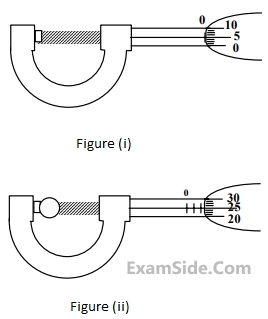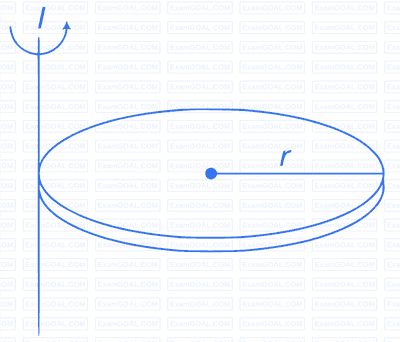Chemistry
En = Total energy, Kn = Kinetic Energy, Vn = Potential Energy, rn = Radius of nth orbit
Match the following
Column I
(A) Vn/Kn = ?
(B) If radius of nth orbit $$ \propto E_n^x,x = ?$$
(C) Angular momentum in lowest orbital
(D) $${1 \over {{r_n}}} \propto {Z^y},y = ?$$
Column II
(p) 0
(q) -1
(r) -2
(s) 1
Mathematics
Column $$I$$
(A) $$\int\limits_0^{\pi /2} {{{\left( {\sin x} \right)}^{\cos x}}\left( {\cos x\cot x - \log {{\left( {\sin x} \right)}^{\sin x}}} \right)dx} $$
(B) Area bounded by $$ - 4{y^2} = x$$ and $$x - 1 = - 5{y^2}$$
(C) Cosine of the angle of intersection of curves $$y = {3^{x - 1}}\log x$$ and $$y = {x^x} - 1$$ is
(D) Let $${{dy} \over {dx}} = {6 \over {x + y}}$$ where $$y(0)=0$$ then value of $$y$$ when $$x+y=6$$ is
Column $$II$$
(p) $$1$$
(q) $$0$$
(r) $$6\ln 2$$
(s) $${4 \over 3}$$
$$\int\limits_a^b {f\left( x \right)dx = {{b - a} \over 2}\left( {f\left( a \right) + f\left( b \right)} \right).} $$ For more accurate result for
$$c \in \left( {a,b} \right),$$ we can use $$\int\limits_a^b {f\left( x \right)dx = \int\limits_a^c {f\left( x \right)dx + \int\limits_c^b {f\left( x \right)dx = F\left( c \right)} } } $$ so
that for $$c = {{a + b} \over 2},$$ we get $$\int\limits_a^b {f\left( x \right)dx = {{b - a} \over 4}\left( {f\left( a \right) + f\left( b \right) + 2f\left( c \right)} \right).} $$
$$\int\limits_0^{\pi /2} {\sin x\,dx = } $$
$$\int\limits_a^b {f\left( x \right)dx = {{b - a} \over 2}\left( {f\left( a \right) + f\left( b \right)} \right).} $$ For more accurate result for
$$c \in \left( {a,b} \right),$$ we can use $$\int\limits_a^b {f\left( x \right)dx = \int\limits_a^c {f\left( x \right)dx + \int\limits_c^b {f\left( x \right)dx = F\left( c \right)} } } $$ so
that for $$c = {{a + b} \over 2},$$ we get $$\int\limits_a^b {f\left( x \right)dx = {{b - a} \over 4}\left( {f\left( a \right) + f\left( b \right) + 2f\left( c \right)} \right).} $$
If $$\mathop {\lim }\limits_{x \to a} {{\int\limits_a^x {f\left( x \right)dx - \left( {{{x - a} \over 2}} \right)\left( {f\left( x \right) + f\left( a \right)} \right)} } \over {{{\left( {x - a} \right)}^3}}} = 0,\,\,$$ then $$f(x)$$ is
of maximum degree
$$\int\limits_a^b {f\left( x \right)dx = {{b - a} \over 2}\left( {f\left( a \right) + f\left( b \right)} \right).} $$ For more accurate result for
$$c \in \left( {a,b} \right),$$ we can use $$\int\limits_a^b {f\left( x \right)dx = \int\limits_a^c {f\left( x \right)dx + \int\limits_c^b {f\left( x \right)dx = F\left( c \right)} } } $$ so
that for $$c = {{a + b} \over 2},$$ we get $$\int\limits_a^b {f\left( x \right)dx = {{b - a} \over 4}\left( {f\left( a \right) + f\left( b \right) + 2f\left( c \right)} \right).} $$
If $$f''\left( x \right) < 0\,\forall x \in \left( {a,b} \right)$$ and $$c$$ is a point such that $$a < c < b,$$ and
$$\left( {c,f\left( c \right)} \right)$$ is the point lying on the curve for which $$F(c)$$ is
maximum, then $$f'(c)$$ is equal to
If $$P\left( {{u_i}} \right) \propto i,\,$$ where $$i=1,2,3,.......,n,$$ then $$\mathop {\lim }\limits_{n \to \infty } P\left( w \right) = $$
If $$P\left( {{u_i}} \right) = c,$$ (a constant) then $$P\left( {{u_n}/w} \right) = $$
Let $$P\left( {{u_i}} \right) = {1 \over n},$$ if $$n$$ is even and $$E$$ denotes the event of choosing even numbered urn, then the value of $$P\left( {w/E} \right)$$ is
(A)$$\,\,\,$$Two rays $$x + y = \left| a \right|$$ and $$ax - y=1$$ intersects each other in the
$$\,\,\,\,\,\,\,\,\,\,$$first quadrant in interval $$a \in \left( {{a_0},\,\,\infty } \right),$$ the value of $${{a_0}}$$ is
(B)$$\,\,\,$$ Point $$\left( {\alpha ,\beta ,\gamma } \right)$$ lies on the plane $$x+y+z=2.$$
$$\,\,\,\,\,\,\,\,\,\,\,$$Let $$\overrightarrow a = \alpha \widehat i + \beta \widehat j + \gamma \widehat k,\widehat k \times \left( {\widehat k \times \overrightarrow a } \right) = 0,$$ then $$\gamma = $$
(C)$$\,\,\,$$$$\left| {\int\limits_0^1 {\left( {1 - {y^2}} \right)dy} } \right| + \left| {\int\limits_1^0 {\left( {{y^2} - 1} \right)dy} } \right|$$
(D)$$\,\,\,$$If $$\sin A\,\,\sin B\,\,\sin C + \cos A\,\,\cos B = 1,$$ then the value of $$\sin C = $$
(p)$$\,\,\,$$ $$2$$
(q)$$\,\,\,$$ $${4 \over 3}$$
(r)$$\,\,\,$$ $$\left| {\int\limits_0^1 {\sqrt {1 - xdx} } } \right| + \left| {\int\limits_{ - 1}^0 {\sqrt {1 + xdx} } } \right|$$
(s)$$\,\,\,$$ $$1$$
If the roots of the equation $${x^2} + 2\left( {a + b + c} \right)x + 3\lambda \left( {ab + bc + ca} \right) = 0$$ are real, then
If a circle is such that it touches the line L and the circle $$C_1$$ externally, such that both the circles are on the same side of the line, then the locus of centre of the circle is
A line L' through A is drawn parallel to BD. Point S moves such that its distances from the BD and the vertex A are equal. If locus of S cuts L' at $$T_2$$ and $$T_3$$ and AC at $$T_1$$, then area of $$\Delta \,{T_1}\,{T_2}\,{T_3}$$ is
If P is any point of $${C_1}$$ and Q is another point on $${C_2}$$, then
$${{P{A^2}\, + \,P{B^2}\, + P{C^2}\, + P{D^2}} \over {Q{A^2} + \,Q{B^2}\, + Q{C^2}\, + Q{D^2}}}$$ is equal to
Column $${\rm I}$$
(A) Area of $$\Delta PQR$$
(B) Radius of circumcircle of $$\Delta PQR$$
(C) Centroid of $$\Delta PQR$$
(D) Circumcentre of $$\Delta PQR$$
Column $${\rm I}$$$${\rm I}$$
(p) $$2$$
(q) $$5/2$$
(r) $$(5/2, 0)$$
(s) $$(2/3, 0)$$
Column $$I$$
(A) $$\sum\limits_{i = 1}^\infty {{{\tan }^{ - 1}}\left( {{1 \over {2{i^2}}}} \right) = t,} $$ then tan $$t=$$
(B) Sides $$a, b, c$$ of a triangle $$ABC$$ are in $$AP$$ and
$$\cos {\theta _1} = {a \over {b + c}},\,\cos {\theta _2} = {b \over {a + c}},\cos {\theta _3} = {c \over {a + b}},$$
then $${\tan ^2}\left( {{{{\theta _1}} \over 2}} \right) + {\tan ^2}\left( {{{{\theta _3}} \over 2}} \right) = $$
(C) A line is perpendicular to $$x + 2y + 2z = 0$$ and
passes through $$(0, 1, 0)$$. The perpendicular distance of this line from the origin is
Column $$II$$
(p) $$1$$
(q) $${{\sqrt 5 } \over 3}$$
(r) $${2 \over 3}$$
then $$g(x)$$ has
Physics
In a screw gauge, the zero of main scale coincides with the fifth division of circular scale in figure (i).The circular division of screw gauge is 50. It moves 0.5 mm on main scale in one rotation.The diameter of the ball in figure (ii) is

A solid sphere of radius $R$ has moment of inertia $I$ about its geometrical axis. If it is melted into a disc of radius $r$ and thickness $t$. If its moment of inertia about the tangential axis (which is perpendicular to plane of the disc), is also equal to $I$, then the value of $r$ is equal to
